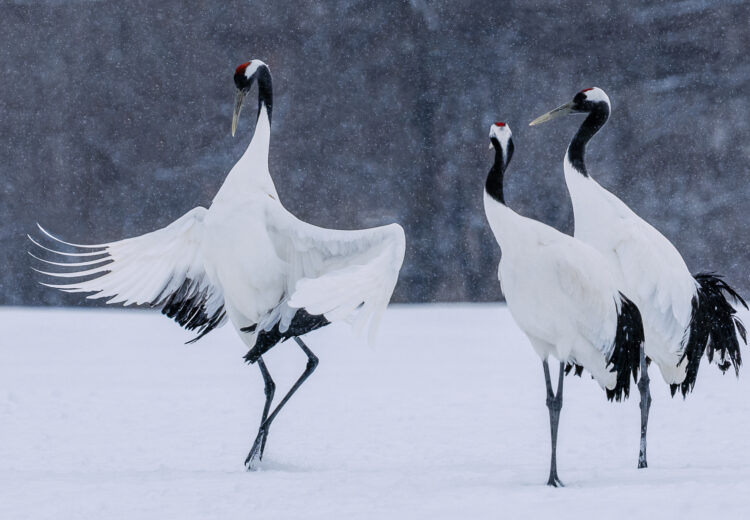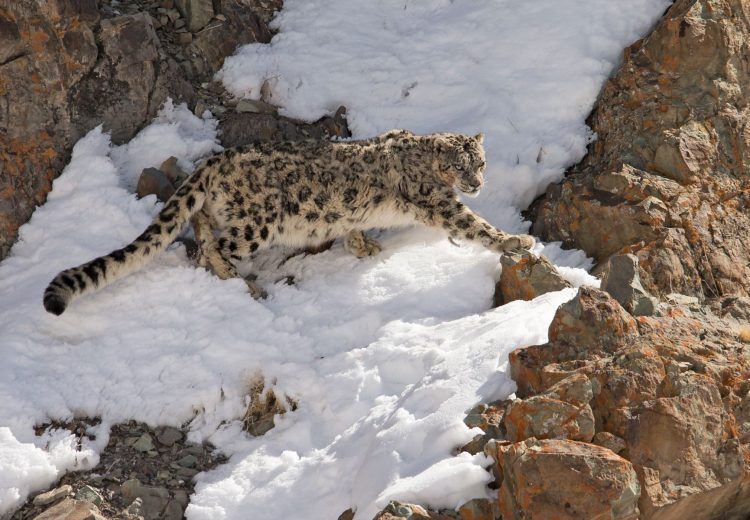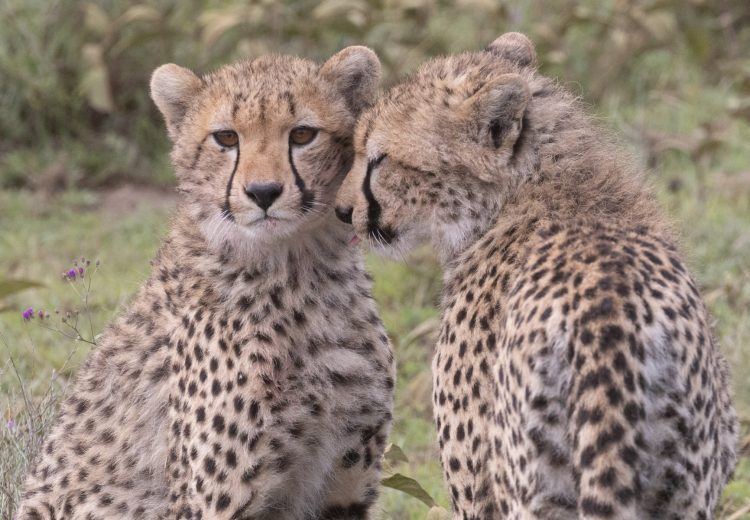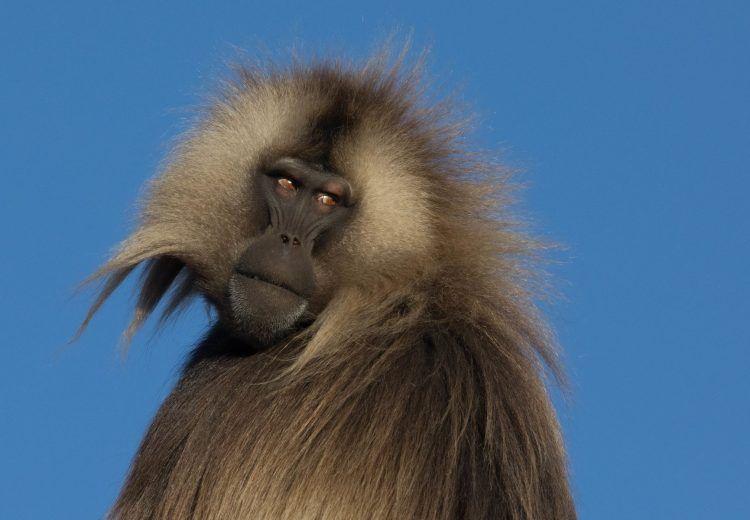Sri Lanka
SRI LANKA’S WONDERFUL WILDLIFE – In search of everything from Leopards to Lizards














































































A young female leopard makes her way on to a forest track in Yala (Image by Inger Vandyke)

Dainty Black-winged Stilts are lovely to photograph in the wetlands near Yala (Image by Inger Vandyke)

Storm approaching Minneriya (Image by Inger Vandyke)

A female Leopard makes her way through fallen trees at Yala (Image by Inger Vandyke)

A Little Green Bee-eater perches with its dragonfly lunch (Image by Inger Vandyke)

Black-naped Hares are seen relatively frequently on early morning safaris in Yala (Image by Inger Vandyke)

Don't forget to look above your head in Sinharaja! There could be beautiful butterflies flying within just a few feet from you! (Image by Inger Vandyke)

A family of Grey Langurs surveying their view from their home in the vines (Image by Charlotte Arthun)

A Ruddy Mongoose rests on the granite boulders of Yala (Image by Inger Vandyke)

Common Green Lizards are often overlooked by photographers in Sri Lanka (Image by Inger Vandyke)

Beautiful Painted Storks are one of the bird photography highlights of Sri Lanka (Image by Inger Vandyke)

Male leopard (Image by Inger Vandyke)

A wild Toque Macaque springs through the rainforest canopy of Sinharaja in the late afternoon (Image by Inger Vandyke)

A Leopard rests in Yala close to sunset (Image by Inger Vandyke)

Shy Stripe-necked Mongoose can be found in the quieter areas of Yala (Image by Inger Vandyke)

Portrait of a Hump-nosed Lizard (Image by Charlotte Arthun)

Pretty in pink (Image by Inger Vandyke)

Grey Langur portrait (Image by Charlotte Arthun)

The elaborately decorated cave temples of Dambulla are some of the best preserved temples in all of Sri Lanka (Image by Inger Vandyke)

An Asian Elephant in its herd (Image by Inger Vandyke)

Water Monitor reflection (Image by Inger Vandyke)

A beautiful statue of a reclining Buddha in Polunnaruwa (Image by Inger Vandyke)

Grey Slender Loris (Image by Indika Jayatissa)

Asian Elephant family in Minneriya (Image by Inger Vandyke)

Exploring the various temple buildings of Polunnaruwa is fascinating (Image by Inger Vandyke)

Indian Pond Heron in the early morning light (Image by Inger Vandyke)

Leopard! (Image by Inger Vandyke)

A Checkered Keelback peers out from its rocky lair at the base of a waterfall in Sinharaja (Image by Inger Vandyke)

A Crested Serpent Eagle showing its namesake crest (Image by Charlotte Arthun)

Portrait of an Asian Elephant (Image by Inger Vandyke)

Malabar Pied Hornbills and their large casques can be quite shy but if you are lucky, you might just catch one staring down at you from their lofty treetop perches (Image by Inger Vandyke)

At first glance they look like dead leaves hanging from a bush in the forest but take a second look and you might just find tiny Sri Lankan Frogmouths in Sinharaja (Image by Inger Vandyke)

Zany looking Crested Serpent Eagle (Image by Charlotte Arthun)

A curious Leopard in a tree (Image by Inger Vandyke)

Grey Slender Loris are an endearing creature of the night in Sri Lanka (Image by Mukesh Hirdaramani)

One of the elaborate relief sculptures inside Polonnaruwa (Image by Inger Vandyke)

Tiny Indian Skops Owls camouflage well in their tree hollows! (Image by Inger Vandyke)

Asian Elephant reflection in Yala (Image by Inger Vandyke)

Portrait of a Blue Magpie (Image by Charlotte Arthun)

In an extraordinary encounter, a large Water Monitor gulps down a Green Forest Lizard for breakfast (Image by Charlotte Arthun)

Temple offerings at Polonnaruwa (Image by Inger Vandyke)

A stunning encounter with a pretty and rare Serendibs Scops Owl in Sinharaja was an absolute highlight of our trip (Image by Charlotte Arthun)

A shy female leopard emerges from the forest in Yala (Image by Inger Vandyke)

Portrait of a Common Green Lizard (Image by Inger Vandyke)

Can you ever have too many photos of Sri Lankan Blue Magpies? (Image by Charlotte Arthun)

Lotus blossom (Image by Inger Vandyke)

A male Leopard takes an early morning stroll in Yala (Image by Inger Vandyke)

Yellow-eared Bulbul feeding off blossoms in Sinharaja (Image by Inger Vandyke)

An ambition bird for many, the Sri Lankan Blue Magpie is a stunning feature of the rainforests in Sinharaja (Image by Charlotte Arthun)

Portrait of a young female Leopard in Yala (Image by Inger Vandyke)

A Changeable Hawk Eagle with its zany looking crest (Image by Inger Vandyke)

Green Pit Vipers are one of Sri Lanka's most beautiful reptiles (Image by Inger Vandyke)

Giant Tree Squirrel in the forest canopy (Image by Inger Vandyke)

Grey Langurs often sun themselves on the granite koppies in Yala (Image by Inger Vandyke)

The icy stare of a Leopard hidden in a tree (Image by Inger Vandyke)

A sleepy male and female Sri Lanka Frogmouth pair (Image by Charlotte Arthun)

A herd of Asian Elephants on a storm front at Minneriya (Image by Inger Vandyke)

Leopard portrait (Image by Inger Vandyke)

Toque Macaque portrait (Image by Inger Vandyke)

A female Toque Macaque with her brightly coloured facial features indicates she is breeding (Image by Inger Vandyke)

Living with the Green Forest Lizards of Sri Lanka is a bit like living with dragons in your garden (Image by Charlotte Arthun)

Box Millipedes roll themselves into a tiny, hard ball and act as a seed pod to escape danger (Image by Inger Vandyke)

Brown Fish Owl (Image by Inger Vandyke)

Portrait of a Purple-faced Leaf Monkey in the forests of Sinharaja (Image by Inger Vandyke)

Portrait of a Spot-billed Pelican in Yala (Image by Inger Vandyke)

Seeing wild Leopards in Yala is surely one of the biggest highlights of any photography tour in Sri Lanka (Image by Inger Vandyke)

A reclining statue of the Buddha inside the rock temples of Dambulla (Image by Inger Vandyke)

Lotus (Image by Inger Vandyke)

Polonnaruwa was once a thriving centre for commerce and religion. Now it's a fascinating day trip filled with beautiful temples and intricate relief carvings (Image by Inger Vandyke)

Being a Leopard can sometimes be very tiring work! (Image by Inger Vandyke)

Wild Asian Elephants are always a highlight of our Sri Lanka photography tours (Image by Charlotte Arthun)

Sri Lanka's Blue Lotus or Star Lily is the country's national flower (Image by Inger Vandyke)

Male Kangaroo Lizards change their colour of their heads to a vivid blue green when they display for females (Image by Inger Vandyke)

A pair of Spot-billed Pelicans fishing in the wetlands near Yala (Image by Inger Vandyke)

Mugger crocodiles inhabit the waterways of Yala (Image by Inger Vandyke)

Rainforest leaf detail in Sinharaja (Image by Inger Vandyke)
|
Saturday 19th July –
Monday 28th July 2025 Leaders: Dhanushka Perera and local naturalist guides |
10 Days | Group Size Limit 5 |
|
Sinharaja Forest Extension
Monday 28th July – Thursday 31st July 2025 |
4 Days | Group Size Limit 5 |
SRI LANKA WILDLIFE PHOTOGRAPHY TOURS WITH WILD IMAGES
“Leopard!” That shout-whisper is surely the word that every wildlife photographer wants to hear during a safari in Sri Lanka. After all, Yala National Park in Sri Lanka is home to the highest density population of leopards in the world. There is nothing quite like watching a leopard slink across the road in front of you or having it watch you from its midday slumber in a nearby tree. While making eye contact with leopards is a breathtaking highlight of any trip to Sri Lanka, the island is a wildlife haven whose forest-clad mountains echo with the calls of Purple-faced Leaf Monkeys, barking Sambhar Deer and a myriad of birds. Across Sri Lanka’s lowlands, gigantic herds of Asian Elephants roam in search of water. Even driving along the roads you might encounter beautiful Common Green Lizards and Sri Lankan pit vipers attracted to the heat of the tarmac. Combine these wildlife highlights with beautiful historical monuments, friendly local people, pretty palm lined beaches and a rugged, mountainous interior and Sri Lanka is truly a photographic wonder of South Asia.
This two-centred 11 day photographic safari focuses on two of Sri Lanka’s wildlife treasures.
The first is Minneriya National Park where spectacular gatherings of Asian Elephants can be seen wandering through the forest or out on the plains. During safaris in Minneriya we may find ourselves surrounded by herds of elephants wandering through our safari jeeps or feeding close by. The waterways of Minneriya feature large, open grassy areas and small patches of flooded forest which can form the background of wonderful landscape images if the elephants have entered these areas to bathe or drink.
The second is the wonderful wilderness that is Yala National Park, one of the best places in the world to see and photograph wild Leopards and Sloth Bears. Yala lies directly on the southern coast of Sri Lanka and features a mixture of habitats including wetlands, patches of riverine forest and dry woodland areas. Perhaps its most spectacular feature is the large granite outcrops or “koppies” that dot the park as geographical high points.
Along with Leopards and Sloth Bears, Yala is home to smaller numbers of Asian elephants, Ruddy Mongoose, Stripe-necked Mongoose, Buffalo, Wild Boar and many species of birds including Black-necked Stork, Indian Peafowl, Crested Serpent Eagle, Malabar Pied Hornbill, Sirkeer, Spot-billed Pelican, Painted Storks, Black-winged Stilts, Pheasant-tailed Jacana and Asian Spoonbills.
During the main tour we also visit three of Sri Lanka’s most extraordinary historical sites including the spectacular cave temples at Dambulla, the largest and best-preserved cave temple complex in Sri Lanka. We will explore the vast complex of buildings, temples and carved rocks at the ancient Kingdom of Polonnaruwa and we will climb the stairs of the giant Sigariya Rock.
Sinharaja Extension
The stunning, rainforest clad mountains of Sinharaja are home to some of Sri Lanka’s most spectacular bird species including Red-faced Malkohas and Blue Magpies. Here in these deep forests lives the incredibly well camouflaged Sri Lankan Frogmouth and the rare, exceedingly difficult to see, Serendib Scops Owl.
Walking along some of Sinharaja’s forest trails you may find yourself surrounded by many species of butterflies, or you might encounter curious Box Milipedes that curl themselves into a tight ball to escape danger. It is possible to find the stunning green Sri Lanka Pit Viper here, along with Checkered Keelbacks or even Green Vine Snake. Curious Sri Lanka Kangaroo Lizards might peer at you from the edge of the trail or a giant millipede might edge its way across the track under your feet.
Looking above your head you might hear Purple-faced Leaf Monkeys springing from branch to branch, or their howling calls will pierce the morning air. The jungle canopy is also home to troupes of wild Toque Macaques.
Three days in Sinharaja will allow you to immerse yourself in this rainforest wonderland and see a totally different side of Sri Lanka. Sinharaja’s biodiversity is truly stunning.
Why explore Sri Lanka with Wild Images?
The answer is simple. We really know it well and can take you to those special, less-often-visited places where great images can be taken. This extensive local knowledge is especially vital in Yala, which has a reputation for being crowded with visitors owing to the park authorities failing in their responsibility to control visitor numbers. This reputation is entirely justified, but what most visitors do not realise is that there are great spots for Leopards and other creatures in Yala that do not involve suffering the crowds. Come with us and you will have a very different and much quieter and more rewarding Sri Lankan safari.
Accommodation & Transport
All the accommodation used is of a good or very good standard. Road transport is by air-conditioned minibuses (passenger vans) and roads are of a variable quality. During our safaris around the parks we will switch to jeeps with plenty of space for photography. The jeeps we use in Sri Lanka are much bigger and better quality vehicles than the small jeeps typically used in India. We never put more than 5 participants in a jeep and, with three broad rows of seats in the back of each, this makes for decent space for both people and kit.
Walking
The walking effort is easy throughout.
Climate
Generally warm or hot, dry and sunny. Overcast weather or early morning mist is not uncommon and some rain is possible at this season and it is likely to be rather humid.
Photographic Equipment
If you use a DSLR for wildlife photography you should bring telephotos (and converters) that will (with a full-frame body) cover the range 200-500mm or 600mm or more. Even a short telephoto of around 100-135mm can be great in certain circumstances in Sri Lanka, particularly for smaller animals like snakes and lizards. You will also find a wide angle lens good for landscapes and historical monuments. There will be quite a few opportunities to use a macro lens. If you bring a good quality bridge camera instead of a DSLR (and this is a perfectly good option in Sri Lanka due to the wide variety of photography subjects) it will be best if it has an optical zoom of 18-20x or more, combined with a reasonable wide-angle at the other end of the zoom range. Be sure to bring plenty of spare battery power. If you would like to talk over suitable equipment, please contact our office. We will be happy to advise.
Photographic Highlights
- Very good opportunities for photographing Leopards at what has to be one of the best sites in the world for seeing this generally elusive cat
- Brilliant gatherings of photogenic Asian Elephants at Minneriya
- Chances to photograph other rare species such as the imposing Sloth Bear
- An excellent variety of birds that can be photographed during our safari-style excursions around Yala National Park
- Cultural wonders such as the famous Sigiriya ‘Lion’ Rock and Polonnaruwa, the medieval capital of Sri Lanka and a UNESCO World Heritage Site, both with excellent primate photography opportunities, as well as the Dambulla Cave Temples
OUTLINE ITINERARY
- Day 1: We will depart for Habarana after breakfast at our airport hotel. En-route we will make a short stop at the beautiful Dambulla Cave Temples
- Day 2: This morning we will visit the iconic Sigiriya Rock and photograph the surrounding moat area. In the afternoon we will enjoy our first safari in Minneriya National Park.
- Day 3: Morning visit to Polonnaruwa temples. Afternoon safari in Minneriya.
- Day 4: Today is essentially a travel day where we transfer to Yala National Park
- Days 5-9: On safari in Yala searching for leopards and other wildlife
- Day 10: After a final morning of photography in Yala, we will transfer to Colombo where our tour will end.
- SINHARAJA EXTENSION
- Day 1: Today we will enjoy drive from Yala to Sinharaja making stops for photography en-route.
- Days 2-3: Full days of walking through the stunning rainforests of Sinharaja for photography
- Day 4: A final morning walk in Sinharaja before we drive to Colombo where our tour will end
To see a larger map, click on the square-like ‘enlarge’ icon in the upper right of the map box.
To see (or hide) the ‘map legend’, click on the icon with an arrow in the upper left of the map box.
To change to a satellite view, which is great for seeing the physical terrain (and for seeing really fine details by repetitive use of the + button), click on the square ‘map view’ icon in the lower left corner of the ‘map legend’.
PRICE INFORMATION
Wild Images Inclusions: Our tour prices include surface transportation, accommodations, meals and entrance fees.
Our tour prices also include all tips for local guides, drivers and accommodation/restaurant staff.
Deposit: 20% of the total tour price. Our office will let you know what deposit amount is due, in order to confirm your booking, following receipt of your online booking form.
TO BOOK THIS TOUR: Click here (you will need the tour dates)
2025: provisional £3180, $4190, €3810, AUD6240. Colombo/Colombo.
Sinharaja Forest Extension: £900, $1190, €1080, AUD1770. Yala/Colombo.
Single Supplement: 2025: £440, $590, €530, AUD870.
Sinharaja Forest Extension: £100, $140, €120, AUD200.
If you are travelling alone, the single supplement will not apply if you are willing to share a room and there is a room-mate of the same sex available.
This tour is priced in US Dollars. Amounts shown in other currencies are indicative.
Air Travel To & From The Tour: Our in-house IATA ticket agency will be pleased to arrange your air travel on request, or you may arrange this yourself if you prefer.
SRI LANKA WILDLIFE PHOTOGRAPHY TOUR: DETAILED ITINERARY
Sri Lanka: Day 1 The tour will begin this morning with a departure at 0830 from the Airport Garden Hotel in Negombo near Colombo Airport.
(It will also be possible to pick up anyone opting to arrive at Colombo Airport on a night flight arriving in the early hours today. This is not something we would recommend, given we think getting some rest before the tour starts is a good strategy, but we do understand that some of our guests have limited time available and may wish to do this. The pick up at the airport will be at 0845.)
Afterwards, we will commence the three and a half-hours transfer to Habarana for a three nights stay.
En route, we will stop at Dambulla for lunch and for a visit to the Dambulla Cave Temples, where we will be able to see the famous rock paintings and rock temples. The temples are comprised of five caves, which have been converted into shrine rooms. Within these rooms, a collection of over 100 statues of Buddha is housed, surrounded by ornately decorated walls. This spectacular site is worth visiting not just for its historical significance, but also for the beautiful views of the surrounding countryside.
Our hotel at Habarana is beautifully designed and located in close proximity to Minneriya National Park. The large and elegantly designed rooms spread across the attractive grounds. The hotel overlooks Lake Habarana, where one can walk around the nature trails leading to the edge of the lake and the tree houses. These provide great opportunities to photograph a wide range of bird species such as Purple Heron, Common and Pied Kingfishers, the impressive White-bellied Sea Eagle, Brahminy Kite and, if we are lucky, the superb Brown Fish Owl. Among the reptiles, Water and Land Monitors (huge lizards) are plentiful. Large numbers of Toque Macaques and Tufted Grey Langurs are also seen around the property and there are usually fantastic opportunities to photograph primate behaviour. Asian Palm Civet, Golden Palm Civet and Sri Lanka Giant Squirrel are some of the other mammals seen regularly around the hotel (the civets are usually active at night).
Sri Lanka: Day 2 This morning we visit the world-famous Sigiriya ‘Lion’ Rock. The dramatic story of this iconic rock centres around Prince Kasyappa, the son of King Dhatusena (459 – 477 AD). Being the King’s son by a non-royal consort, Kasyappa executed his own father to gain the throne. The Crown Prince, Mogaliana, fled to India in fear of his life. In order to protect himself from future attacks from the rightful king, Kasyappa made Sigiriya his capital and built a palace on the summit of the rock, elevated at around 650 feet. He then proceeded to use his artistic genius to create a vision of heaven on earth, making landscaped gardens with water pools, fountains and terraces. The moat around the Sigiriya sanctuary is another excellent site for photographing the Tufted Grey Langur and Toque Macaques, which are plentiful in the area and are the most photogenic of subjects. Over 150 species of birds have also been recorded here, and there is sure to be something of interest to point the cameras at, such as a Crested Hawk Eagle or a Greater Racket Tailed Drongo.
Climbing this incredible stand-alone rock monolith can be a rewarding experience, but photographically it may or may not be worthwhile, depending on your personal opinion. Photographs of the rock paintings are no longer allowed, and in some places, the stairways can be crowded, but the panorama at the top of the rock is impressive. For those in the group who wish to make the climb, we can arrange for a guided walk to the top.
After lunch, we will make an afternoon game drive in Minneriya National Park. From July to October, anywhere from 100 to 300 Asian Elephants gather on the receding tank (lake) beds here. The gathering of the Elephants at Minneriya is an extremely impressive wildlife spectacle. The gathering provides a fantastic opportunity to photograph elephants in many different situations, such as young elephants and calves at play, big males interacting with the herds in their search for potential mates whilst others are drinking, bathing and playing in the water.
The open areas around the lake are excellent for photographing raptors including Brahminy Kite, Grey-headed Fish Eagle and the majestic White-bellied Sea Eagle. Toque Macaque, Tufted Grey Langur, Sri Lanka Giant Squirrel, Jackal and Chital (Spotted Deer) are some of the other mammals that we are likely to see and may be able to photograph.
This evening there will be an optional post-dinner excursion around the Sigiriya area to search for nocturnal creatures including Golden Palm Civets, Grey Slender Lorises, Eurasian Otters and if we are immensely lucky, Fishing Cat. The photographic opportunities for many of these animals may vary, depending on the encounters we enjoy, however an opportunity to see some of these creatures in their wild environment is very special.
Sri Lanka: Day 3 This morning we will visit Polonnaruwa, the medieval capital of Sri Lanka and a UNESCO World Heritage Site to boot. Here we will visit the world-famous rock-cut Buddha statues of Gal Vihara as well as the Parakrama Samudra (‘Sea of Parakrama’) a 2500-hectare man-made reservoir (with a capacity of 134 million cubic metres) built by King Parakramabahu I (1153 –1186 AD). Here, we will encounter troops of Toque Macaques, that were famously featured in both the BBC’s Temple Troop and David Attenborough’s Life of Mammals. Here, we will be intrigued by the power play between the Toque Macaques and Tufted Grey Langurs. Troops of the attractive northern race of the endemic Purple-faced Leaf Monkeys can also be found in this area.
In the afternoon, we will make another safari to Minneriya National Park to once again enjoy photographing the ‘gathering of elephants’ and its other wildlife.
Sri Lanka: Day 4 Today will essentially be a travel day, and after breakfast, we will leave for Yala, which will be our base for the next six nights.
Despite the long drive, we will have a chance to enjoy and photograph some wonderful and varied landscapes in the Sri Lankan countryside. By late afternoon we should arrive at our comfortable hotel in the Yala area.
Sri Lanka: Days 5-9 During our five full days at Yala, our primary focus will be morning and afternoon safaris into Yala National Park. Yala is undoubtedly Sri Lanka’s most famous national park and the best in Sri Lanka for viewing a wide variety of animals. It is a wonderful place with a real diversity of habitats from scrub jungle and rocky outcrops to lakes, brackish lagoons and riverine habitats.
Yala National Park (or Ruhuna National Park as it is sometimes known) is huge, but, as some parts of this park are very busy, it pays to go there with expert guides who know the quieter areas that offer great photographic opportunities. We can claim truly invaluable expertise in this respect. Go to Yala with Wild Images and you are not going to experience the crowds day after day like so many visitors have to. It will make such a difference to your memories of Yala, never mind the wildlife photography opportunities!
Yala’s star attraction, and one of the main reasons for our visit, is undoubtedly the Leopard. Yala West has one of the highest densities of Leopards in the world and is possibly the best place on earth to see and photograph this usually elusive species in the wild. Early mornings and late afternoons are usually the best times to find these spectacular cats: walking along the roads; lying on a rocky outcrop; having a drink in one of the many waterholes; resting with limbs dangling from a tree or simply just strolling through the jungle. Each encounter is different but every one a memorable event! Most years there are also one or two sets of cubs that at times perform for the cameras, providing photographers with a great opportunity to photograph the social and interactive behaviour of an animal which usually leads a solitary existence.
Asian Elephants can also be seen here, though in smaller numbers and smaller groups than at Minneriya. A highlight though is to photograph the large tuskers, of which there are around ten in the park. Unlike in Africa and in most parts of Asia only 7% of male elephants in Sri Lanka bear tusks!
Yala’s third star attraction is the magnificent Sloth Bear, and there is usually an individual, or mother Sloth Bear with cubs, which is tolerant of vehicles. During our series of game drives, we will have an excellent chance of connecting with this seldom-seen creature. Indeed, in June and July, when the Palu Trees begin to bear ripe fruit, Sloth Bears can be seen regularly.
Other conspicuous wildlife regularly seen at Yala which we may be able to point the lenses at include the attractive Chital (or Spotted Deer), the large Sambar, Golden Jackal, Wild Boar, Tufted Grey Langur, Toque Macaque, Stripe-necked and Ruddy Mongooses and Black-naped Hare. Some pretty impressive reptiles are likely to crop up too, namely Marsh Crocodile and some rather large monitor lizards which look almost as dangerous as they scamper away noisily at high speed!
And then of course there are the birds. Yala has a very rich and varied avifauna, and over 300 species are known from the park. As we travel around on our morning and afternoon safaris we will no doubt have opportunities to photograph a good number of these, with possibilities including such charismatic species as Ceylon Junglefowl and Great Thick-knee, and we may get to see some of the dry zone specialities such as Sirkeer and Blue-faced Malkohas and Malabar Pied Hornbill at close quarters
In addition, during the ‘down’ time between our safari drives, for those not intent on resting, relaxing or working on their photos, there will be time to explore the environment around the hotels, where many avian surprises may lurk.
Sri Lanka: Day 10 Our final photography session will be at a lagoon near our hotel. Here we should be able to get very close to Spot-billed Pelicans, handsome Painted Storks and many other birds, as well as some rather approachable crocodiles he wildlife that has been observed from the hotel premises is impressive and can include Wild Boar, Asian Elephant as well as buffalos and crocodiles that wallow in the nearby tank. Even Leopards and Sloth Bears are seen from time to time!
Afterwards those not taking the extension will be transferred to Colombo International Airport to arrive by late afternoon (if you are departing this evening) or to your hotel in Negombo if you have decided to stay overnight. It will be time to reflect back upon what should have been a marvellous adventure.
SINHARAJA FOREST EXTENSION
Sri Lanka (Sinharaja): Day 1 From Yala we drive overland through the stunning Sri Lankan countryside to the World Heritage-listed forests of Sinharaja. It will take over half a day to drive between Yala and Sinharaja, allowing for a few stops. We will arrive at our lodge near the edge of the reserve in time for dinner.
Sri Lanka (Sinharaja): Day 2 We will arrange for an early breakfast at our lodge so we can arrive at the entrance to Sinharaja when the gates open. The attractive park building at the entrance has a tiny water pool which is fed by a tiny cascade. It is worth checking this pool for smaller creatures like Damselflies, frogs, bamboo orchids and water lilies. Checkered Keelback snakes can also be found swimming freely between the lily pads or around the rocks at the bottom of the cascade.
Once the park has opened, we will cross a bridge over the river and start our gentle walk uphill searching for rainforest wildlife including butterflies, snakes, millipedes and birds. We will be looking for and listening out for two of Sinharaja’s most iconic bird species – the Blue Magpie and Red-faced Malkoha but we will also be listening for ‘bird waves’ or mixed feeding flocks of birds in the canopy. If we chance upon one of these we may find Orange-billed Babblers, Crested Drongos and Malabar Trogons on top of the targeted Blue Magpies and Red-faced Malkohas. It is worth watching these feeding flocks for the large Grizzled Giant Squirrel which can sometimes be found feeding in the melee of birds.
On a quick check around your feet while you walk the trails of Sinharaja, you may spot curious Box Millipedes that roll up into a seed pod-like ball if they feel threatened. Sinharaja is home to such an astonishing variety of wildlife, it is worth spending time here to photograph the butterflies, look for curious Kangaroo Lizards and check the vines for Green Vine Snake and Sri Lankan Green Pit Viper. On the path verges you might find the non-poisonous Giant Millipedes or a highly poisonous Black Scorpion!
Sri Lanka (Sinharaja): Day 3 After another early start, we will do a slightly more strenuous walk uphill to an alternative entrance to the park. Mornings in Sinharaja can often be misty so we will be listening for the haunting calls of the park’s Purple-faced Leaf Monkeys echoing from the forests. If we hear some calling from the trails we will try to find and photograph them. While normally shy it is possible to have closer encounters with these beautiful monkeys if you remain quiet and you move slowly.
In contrast, the park’s resident Toque Macaques can often be a bit more cheeky and it is worth stopping if you hear any movement in the branches and leaves as Toque Macaques may be running through the canopy above you.
Further into the forest, if you are very lucky our guide may find a very shy, difficult-to-spot Sri Lankan Frogmouth. These tiny birds can so easily be initially mistaken as dead leaves but a trained eye will spot them. You need to watch for a dead leaf that turns its head!
Sri Lanka (Sinharaja): Day 4 This morning we will have a final opportunity to photograph in the Sinharaja area before we return to Colombo Airport by late afternoon (if you are departing this evening) or to your Negombo hotel if you have decided to stay overnight. It will be time to reflect back upon what should have been a marvellous adventure.
Sri Lanka Wildlife Photography Tour Report 2019
Extraordinary sightings of leopards; a secret location for a herd of Sri Lanka’s Tusker elephants; remarkable views of Serendibs Scops Owl and close encounters with amazing Water Monitors were all highlights of our recent wildlife photography tour to Sri Lanka. Here, Wild Images leader Charlotte Arthun reports on a very successful trip. On the first […]
View Report
Sri Lanka Wildlife Photography Tour Report 2017
Sri Lanka Wildlife Spectacular Dambulla Sri Lanka, the island of spices, is one of the jewels in the natural history crown of South Asia. Our group met in Colombo airport, from where we started the journey north eastwards towards Habarana, our base for exploring Minneriya where we were to start our search for herds of […]
View Report
Other Wild Images Tours featuring signature mammals
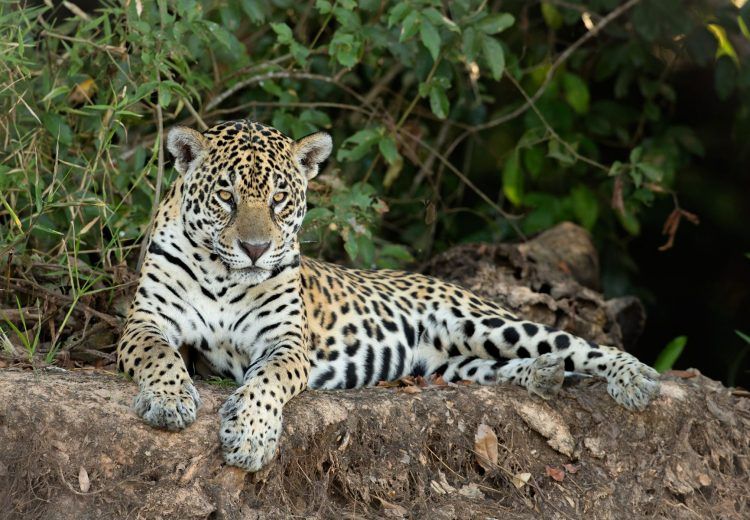
South America (including Galapagos)
August-September 2024
BRAZIL’S PANTANAL: JAGUARS AND SO MUCH MORE – South America’s best wildlife photography destination
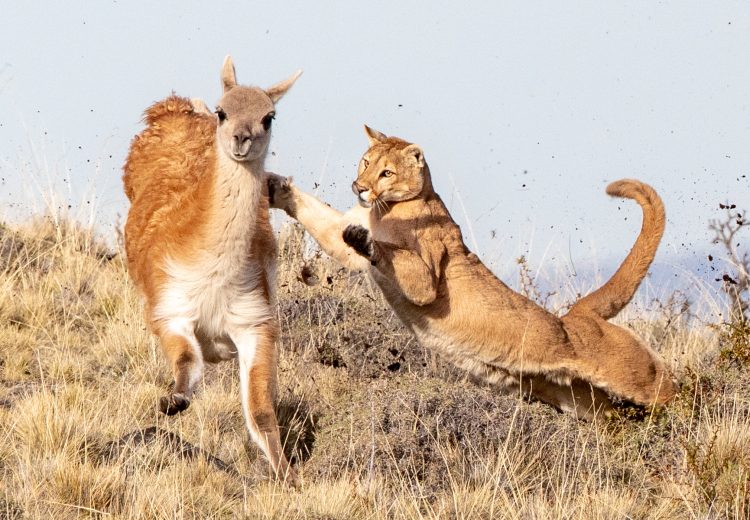
South America (including Galapagos)
August-September 2024
CHILE: WALKING WITH PUMAS – An Extraordinary Photographic Adventure at Torres del Paine
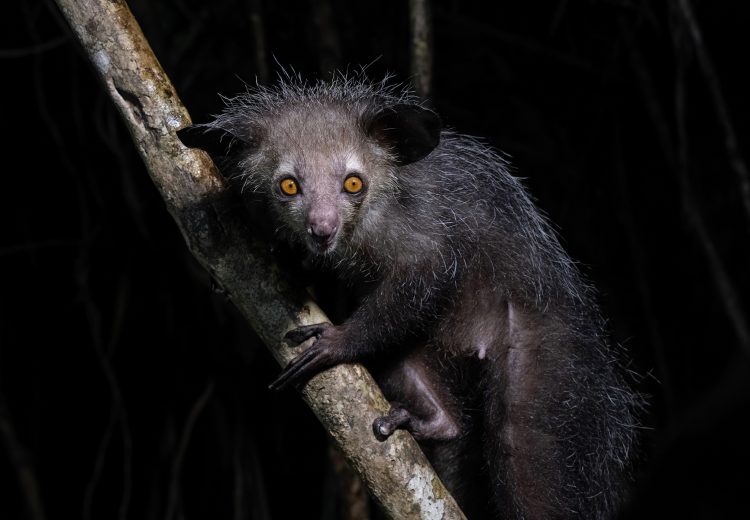
Madagascar
October 2024
MADAGASCAR: A WORLD APART – The Natural Curiosities of the ‘Eighth Continent’
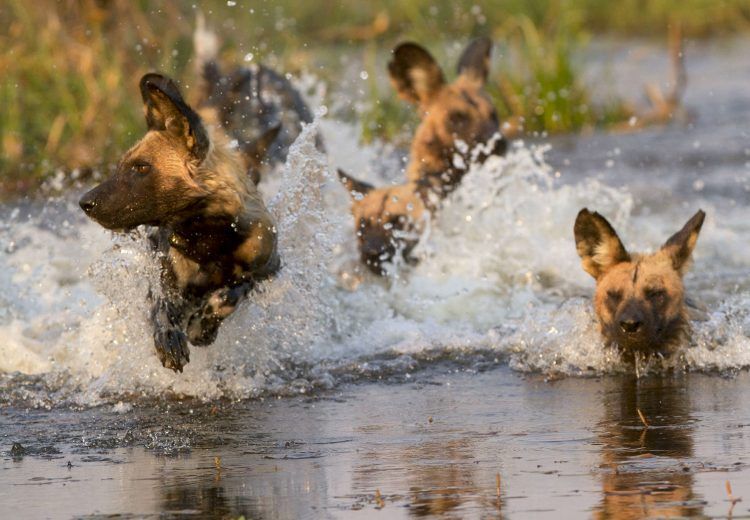
Botswana & The Okavango
November 2024
BOTSWANA: WILDLIFE SPECTACULAR – The photographic wonders of the Okavango and Chobe
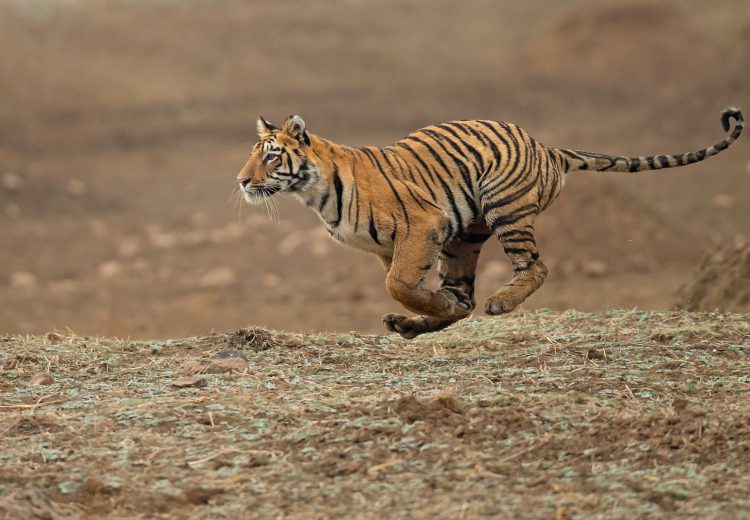
India
March-April 2025















































































